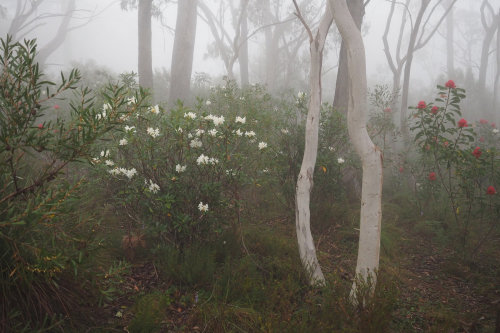The Perfect Storm Of Intelligence And Agility
The perfect storm of intelligence and agility
More Posts from Enbylvania65000 and Others
.אני מדבר עברית
Je parle français.
LATꟾNÉ·DꟾCERE·POSSVM
(note: Hebrew is my native language but I’m barely literate and don’t know the grammar well; my Latin is very basic.)


Campbell Gardens by trisharooni



okay my calendar is available for sale again!
https://8pxl.co
i also have new charms and prints available!


Still Friday This Counts
Saturday EGSNP during the day
I know this is such a doomer kind of attitude but I genuinely cannot stand it when people go around talking about the ‘silent majority’ when it comes to Jew hatred. There’s two main problems I have with this statement
— Sure, these people might support Jews now, but it’s probably safe to say the majority of people in the world have deeply ingrained biases against Jews. Those biases are easily exploited, easily brought out, and easily radicalised into rabid hatred. See: large swaths of leftist spaces, who honestly seemed like sleeper agents with how fast they openly admitted raping Jews is a moral thing. There’s also the issue of a lot of these silent majority people not supporting Hamas or believing in the Aryan race or thinking that Jews have no culture and we’re just stealing it from everyone else, but still tolerating those ideas being held in other people— it shows that these people neither understand nor care about the gravity of these views, which then makes those precious biases much, much easier to show
and
— The entire point of the silent majority is that they are silent. Sure, they might chat with their Jewish friends about how bad things are, they might express sympathy in private, things like that. But when push comes to shove, when Jews are being actively murdered wide scale, they don’t show up. They leave us in the dirt. They watch quietly as the Gestappo drags their neighbours away. They look away politely as their Dhimmi shopkeeper is beaten in the street for walking on the wrong side of the pavement. They close their blinds when their friend is tied to the stake and burned alive
I know it’s comforting to think of this vague concept of the silent majority, but it’s not actually reality. I know it sucks feeling like you need to have your guard up all the time (and you don’t, just be careful), it’s going to suck a whole lot more if you put yourself into a false sense of security. The silent majority are not our friends. The silent majority are not there for us. The silent majority don’t care. We can’t just live in a nebulous idea of people who quietly tut to themselves whenever they see someone saying ‘glory to the resistance’ or ‘Jews are trying to taint the Aryan race’, we need to focus on the tangible reality, and the people who are actually present
I think this is also why I, and so many other Jews, absolutely love non-Jewish allies. There’s something so indescribably amazing to see people in this world that’s been so horrible to us standing up for us, listening to us, helping us. Allies go through a lot of shit from others because they care about us, I’ve seen it so much— they’ll get vicious hate for just associating with Jews. And they still do it. They still stick with us. Because they care, and it’s just so wonderful
Spread the love to non-Jewish allies, you are so amazing. And to the silent majority, I hope you can become the help that we desperately need

About 7,000 years ago, a vast lake spread hundreds of square kilometers across north-central Africa. Known to scientists as Lake Mega Chad, it covered more than 400,000 square kilometers (150,000 square miles) at its peak, making it slightly larger than the Caspian Sea, the biggest lake on Earth today.
“I tell the landscape where we’re going.”
The Early Therocene: 30 million years post-establishment

Where The Buffalomys Roam: The Mison
The largest land animals of the Early Therocene are the giant, herbivorous descendants of the cavybaras, known as the mison. One of the most successful megafaunal herbivores of this age, they are represented by several dozen species in five genera, and are found in various biomes of the continents of Nodera, Westerna and Ecatoria.
The mison first emerged at the end of the Late Rodentocene, having evolved from the still-extant alpine cavybaras (Pilosocricetus spp.) native to the continent of Westerna. A lowering of the sea levels during a short period of glaciation at the end of the Rodentocene exposed land bridges from the shallow seas and allowed the mison to migrate west to Nodera and south to Ecatoria, where they became isolated once the sea levels rose and eventually evolved into different species.
Today, the mison are among the most abundant grazers throughout the plains across all three continents, and also the biggest. Weighing up to two thousand pounds and standing six feet as the shoulder, they are the biggest hamsters of this age, far outclassing their cavybara ancestors and rivalling the biggest rodent ever to live on Earth, the prehistoric giant pacarana, Josephoartegesia monesi. Their enormous size leaves them nigh-invulnerable to predators once they are fully grown, by sheer virtue of being so big.
The bearded mison of Westerna (Bovitauromys spp.) is the most basal genus, native to the cold plateaus of the Westernan continent where the mison first originated. Their Noderan cousins, the plains mison (Buffalomys spp.) and the savannah mison (Bisonomimus spp.) are adapted to warmer climates, with the plains mison being a resident of relatively warmer temperate plains, and the savannah mison being far less shaggy than its cold-clime relatives, as well as sporting a distinctly shorter and blockier head, as an adaptation for stronger jaw muscles to masticate the tough succulents of the dry semidesert.

In the southern continent of Ecatoria, however, live a distinct lineage of mison, which sport an unusual adaptation: a pair of tusks. All mison species possess molars that, much like their incisors, have evolved to grow constantly, allowing them to cope with the constant wear and tear of grinding tough woody vegetation. This branch of the mison family tree, however, modified their first upper molars into a pair of prominent protruding tusks, as while their sheer size was protection enough from fearret predators in Nodera and Westerna, in the continent of Ecatoria the mison had a different, endemic carnivore to worry about: the hamyenas.
The steppe tusked mison (Ceratodontomys spp.) sport small straight tusks, which serve to dig up ground plants and defend themselves from predatory hamyenas with jabbing thrusts of their massive heads. The southern tusked mison (Megaloceratodon spp.), on the other hand sport enormous, curving tusks, which it uses to sweep aside snow, fend off predators, and compete with other males- while both sexes sport tusks, they are markedly bigger in the males, which they use to joust with rivals over territory and mates.
All species of mison are grazers, specializing to feed on low-growing vegetation such as grasses, bushes and shrubs. Their immense sizes and tendency to travel in large herds numbering in the hundreds make them important ecosystem engineers, grazing through tough, thorny vegetation and promoting the growth of other plants that other herbivores, such as boingos and hamtelopes, rely on for food.
▪▪▪▪▪▪▪▪▪
That rabbit/hare post is messing me up. I’d thought they were synonyms. Their development and social behavior are all different. They can’t even interbreed. They don’t have the same number of chromosomes. Dogs, wolves, jackals, and coyotes can mate with each other and have fertile offspring but rabbits and hares cant even make infertile ones bc they just die in the womb. Wack.
-
 gretaphasmatos liked this · 4 months ago
gretaphasmatos liked this · 4 months ago -
 morallyambigousgreyon liked this · 9 months ago
morallyambigousgreyon liked this · 9 months ago -
 paladinsaredumb reblogged this · 10 months ago
paladinsaredumb reblogged this · 10 months ago -
 13suibian liked this · 10 months ago
13suibian liked this · 10 months ago -
 nine-dirts reblogged this · 1 year ago
nine-dirts reblogged this · 1 year ago -
 librariescats reblogged this · 1 year ago
librariescats reblogged this · 1 year ago -
 roses-and-rainfall reblogged this · 1 year ago
roses-and-rainfall reblogged this · 1 year ago -
 jcs69 liked this · 1 year ago
jcs69 liked this · 1 year ago -
 lilteecupangels reblogged this · 1 year ago
lilteecupangels reblogged this · 1 year ago -
 letssergeyworld-blog liked this · 1 year ago
letssergeyworld-blog liked this · 1 year ago -
 capnportofficial liked this · 1 year ago
capnportofficial liked this · 1 year ago -
 gabrobeencningben liked this · 1 year ago
gabrobeencningben liked this · 1 year ago -
 persephone-rose-r reblogged this · 1 year ago
persephone-rose-r reblogged this · 1 year ago -
 fyeahimanengineer liked this · 1 year ago
fyeahimanengineer liked this · 1 year ago -
 coalbear liked this · 1 year ago
coalbear liked this · 1 year ago -
 stillwaitingforanadventure reblogged this · 1 year ago
stillwaitingforanadventure reblogged this · 1 year ago -
 astramachina liked this · 1 year ago
astramachina liked this · 1 year ago -
 proficientatfreakness reblogged this · 1 year ago
proficientatfreakness reblogged this · 1 year ago -
 proficientatfreakness liked this · 1 year ago
proficientatfreakness liked this · 1 year ago -
 double-o-donut reblogged this · 1 year ago
double-o-donut reblogged this · 1 year ago -
 ardanirnthedas liked this · 1 year ago
ardanirnthedas liked this · 1 year ago -
 theconfusedartist reblogged this · 1 year ago
theconfusedartist reblogged this · 1 year ago -
 raccoon-is-my-spirit-animal liked this · 1 year ago
raccoon-is-my-spirit-animal liked this · 1 year ago -
 persephone-rose-r liked this · 1 year ago
persephone-rose-r liked this · 1 year ago -
 eldritch-gay-frog reblogged this · 1 year ago
eldritch-gay-frog reblogged this · 1 year ago -
 eldritch-gay-frog liked this · 1 year ago
eldritch-gay-frog liked this · 1 year ago -
 thanksveryga reblogged this · 1 year ago
thanksveryga reblogged this · 1 year ago -
 navigatorwrongway reblogged this · 1 year ago
navigatorwrongway reblogged this · 1 year ago -
 navigatorwrongway liked this · 1 year ago
navigatorwrongway liked this · 1 year ago -
 thedevilsdaughter267 reblogged this · 2 years ago
thedevilsdaughter267 reblogged this · 2 years ago -
 squidrocket reblogged this · 2 years ago
squidrocket reblogged this · 2 years ago -
 michelecogni liked this · 2 years ago
michelecogni liked this · 2 years ago -
 holysox reblogged this · 2 years ago
holysox reblogged this · 2 years ago -
 koalastick reblogged this · 2 years ago
koalastick reblogged this · 2 years ago -
 tapferhills liked this · 2 years ago
tapferhills liked this · 2 years ago -
 praise-the-lord-im-dead liked this · 2 years ago
praise-the-lord-im-dead liked this · 2 years ago -
 your-rose-colored-boy reblogged this · 2 years ago
your-rose-colored-boy reblogged this · 2 years ago -
 your-rose-colored-boy liked this · 2 years ago
your-rose-colored-boy liked this · 2 years ago -
 artimies6 reblogged this · 2 years ago
artimies6 reblogged this · 2 years ago -
 ghostrider-02 reblogged this · 2 years ago
ghostrider-02 reblogged this · 2 years ago -
 artimies6 reblogged this · 2 years ago
artimies6 reblogged this · 2 years ago -
 squidrocket liked this · 2 years ago
squidrocket liked this · 2 years ago -
 lemonlimekodkod liked this · 2 years ago
lemonlimekodkod liked this · 2 years ago




